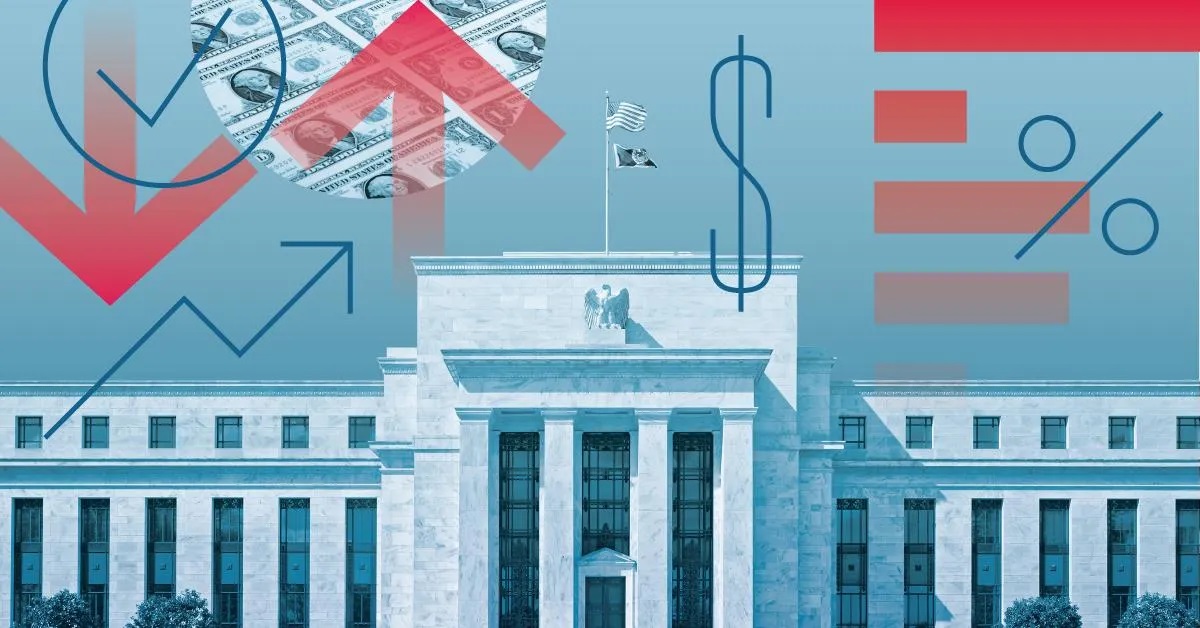The U.S. Federal Reserve is on Wednesday heading for its first interest rate cut since the onset of the COVID-19 pandemic — and despite the move being widely forecast, global investors are braced for impact, CNBC reported
The Fed is behind a swathe of its central bank peers, including those in the eurozone, the U.K., Canada, Mexico, Switzerland and Sweden, all of which have already cut rates.
Many of these policymakers stressed they were willing to move ahead of the Fed — usually seen as the global leader — in response to slowing growth and easing inflationary pressures at home.
However, some analysts have questioned how much further they could go before the Fed — the world’s biggest central bank by assets — followed suit, given the ripples its actions create.
Global impact
A key concern is the pressure interest rate differentials put on currencies.
Broadly speaking, higher rates attract more foreign investors seeking better returns, in turn boosting the value of the domestic currency.
This has been seen in the current cycle with the Japanese yen and Turkish lira taking a battering while their central banks kept rates low, while the U.S. dollar — as measured against a basket of currencies – soared throughout 2022 as the Fed delivered stringent rate hikes.
These differentials are particularly difficult for central banks attempting to keep price rises in check, since a weaker currency can be inflationary as it increases the cost of imported goods.
Beyond foreign exchange, another important effect of Federal Reserve rate-setting is its impact on the U.S. economy, particularly given the recent focus on a weakening labor market and the possibility of a recession.
“As such an important driver of global growth, this is bound to affect asset prices around the world,” Richard Carter, head of fixed interest research at Quilter Cheviot, said of a rate cut by the Fed.
That includes gold – which hit a record high this week on expectations of a move by the Fed. Higher rates are generally viewed to be a drag on gold since they make fixed-income investments, such as bonds, more attractive, although historically this has not always been the case. Gold is also used as a hedge against inflation (which can be pushed higher as rates go lower) and investors also buy the commodity in times of market stress.
Oil and other commodities, usually priced in dollars, often receive a boost with a rate cut as a lower cost of borrowing can stimulate an economy and increase demand.
Many emerging markets are more sensitive to these factors, making Fed moves even more important for them than bigger economies. Equity markets are also affected by moves by the Fed — and not just in the U.S.
Much of the global stock market volatility over recent months was linked to speculation over when, and by how much, the U.S. central bank will reduce rates.
“Interest rate cuts reduce the cost of borrowing in U.S. dollars, thereby creating easier liquidity conditions for companies around the world,” Quilter Cheviot’s Richard Carter continued via email.
“Lower U.S. interest rates should also lower the yield available on U.S. assets such as Treasurys, thus making other markets relatively more attractive,” he added.
First cut the deepest?
While markets are confident that the Fed will kick off its cutting cycle on Wednesday, there is considerable uncertainty over how far and fast it will move over the remaining three meetings this year and into 2025.
That includes whether the initial cut will reduce the Fed funds rate by 25 basis points or 50 basis points below its current 525 to 550 range. Over the last week, market pricing for the larger “jumbo” cut has leapt from under 50% to nearly 70%, according to CME Group’s FedWatch tool.
“Whatever the outcome, the markets will move,” Steven Bell, chief economist at Columbia Threadneedle, said in a Monday note.
“It is unusual for the Fed to leave the market guessing to this extent ahead of the meeting, especially so close to the U.S. presidential election. I can only presume that the committee itself is split,” Bell continued.
The November election has raised questions over the direction of U.S. fiscal policy, and how that could in turn impact inflation and monetary policy.
Joe Tuckey, head of foreign exchange analysis at Argentex, said that an initial 50 basis point rate cut by the Fed had historically “preceded some awful returns in equity markets,” notably in 2007 ahead of the Great Financial Crisis and in the early 2000s amid the tech bubble market rout.
“In essence, the need for a larger cut points toward growth concerns and economic trouble ahead,” Tuckey said.
However, Hani Redha, multi-asset portfolio manager at PineBridge Investments, said it was “more critical” to look at pricing for more than 270 basis points worth of cuts through to the end of 2025.
“The economic data is still not decisive enough to give direction to the market,” Redha said, which was supporting defensive sectors.
“I think initially the reaction is going to be mixed, but probably equities can still hold up here until there’s a more decisive break in the economic data.”








